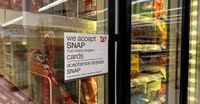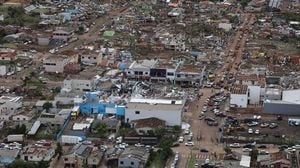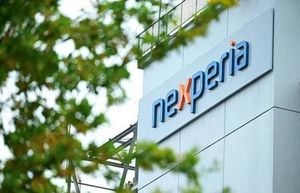As the leaves turn in late October 2025, millions of American families are bracing for an uncertain November—one that could see their grocery budgets slashed or even eliminated altogether. The looming crisis is centered on the Supplemental Nutrition Assistance Program (SNAP), the federal initiative that helps over 41 million Americans put food on the table. With the government shutdown dragging on since October 1 and new federal legislation slashing SNAP funding, the safety net that so many rely on is fraying at an alarming pace.
The trouble began in earnest with the passage of the One Big Beautiful Bill Act in July 2025. According to estimates from the Urban Institute and DataHaven, this sweeping law cuts a staggering $168 billion from SNAP over the next decade. For Connecticut families who receive at least $25 in monthly benefits, the impact is immediate and severe: they stand to lose nearly $200 a month on average beginning November 1, a bigger hit than families in any other state except Washington, D.C., as reported by CT Mirror. In dollars and cents, Connecticut will see $11 million to $15 million less in food assistance each month. Cities like Hartford, New Haven, Waterbury, and Bridgeport are projected to be hit hardest, with Hartford alone losing between $1.2 million and $1.6 million in monthly SNAP benefits.
But the crisis is hardly confined to Connecticut. The ongoing government shutdown—now in its fourth week—is threatening to freeze SNAP payments nationwide. The U.S. Department of Agriculture (USDA), which administers SNAP, issued a stark warning on October 10: “SNAP has funding available for benefits and operations through the month of October. However, if the current lapse in appropriations continues, there will be insufficient funds to pay full November SNAP benefits for approximately 42 million individuals across the nation,” the USDA wrote in a letter to state SNAP directors, as reported by TIME. The USDA has directed states to hold off on sending November benefits to EBT vendors until further notice.
Political leaders on both sides of the aisle are quick to assign blame for the deadlock. In Virginia, Republican Governor Glenn Youngkin declared a state of emergency on October 23, saying, “The Democrat Shutdown will cause SNAP benefits to run out for over 850,000 Virginians in need starting Nov. 1, 2025. I refuse to let hungry Virginians be used as ‘leverage’ by Congressional Democrats. I am declaring a State of Emergency due to the Democrat Shutdown to protect hungry Virginians in need.” He promised to use emergency state funds to keep food assistance flowing, at least temporarily.
Meanwhile, Democratic leaders are pointing the finger back at the Trump Administration. California Governor Gavin Newsom, whose state has 5.5 million CalFresh (SNAP) recipients, warned that benefit delays could begin as early as this week. “Trump’s failure to open the federal government is now endangering people’s lives and making basic needs like food more expensive,” Newsom said on Monday. He announced that the California Military Department would be deployed to assist families at risk of losing benefits, adding, “We won't let the GOP's cruel inaction force millions of Californians to go hungry.”
The finger-pointing extends across the country. In Texas, the Human and Health Services Department confirmed that November benefits will not be paid if the shutdown persists past October 27. Pennsylvania has already halted some SNAP payments as of October 16. Illinois’ Department of Human Services warned that 1.9 million recipients may miss out on their November benefits, stating, “If SNAP funds are not delivered by the federal government, the State of Illinois does not have the budgetary ability to backfill these critical resources.” New York, Minnesota, Oregon, New Jersey, and local governments in Colorado have all issued similar warnings, with Democratic governors like Kathy Hochul and Tina Kotek lambasting Washington for the impasse and the sweeping cuts.
As the political stalemate continues, the practical consequences are dire. SNAP is credited by the USDA with reducing food insecurity by about 30% and the risk of very severe food insecurity by 20%. Yet, as the shutdown drags on, food banks across the country are bracing for a tidal wave of new clients. “People are being told to come to food banks, but in all honesty food banks can’t bear the weight of what’s coming,” Weston Edmunds, Director of Marketing & Communications at Weld Food Banks in Colorado, told 9News. The Food Research & Action Center echoed these worries, stating, “Allowing hunger to deepen during a shutdown is not an inevitability; it is a policy choice.”
The One Big Beautiful Bill Act doesn’t just slash overall SNAP funding; it also expands work requirements and eliminates longstanding exemptions. Starting November 1, veterans, people aged 55 to 64, young adults aged 18 to 25 who aged out of foster care, homeless individuals, and parents of teenagers aged 14 to 17 will be subject to new work rules or lose eligibility. Noncitizen lawful immigrants, including asylum seekers and refugees, will also lose access to SNAP. Researchers at the Urban Institute note that such work requirements “decrease SNAP benefits but don’t increase work or wages.”
These changes are particularly alarming for Connecticut, where about 11% of residents live below the federal poverty line but account for 41% of all SNAP recipients, according to DataHaven. Meghan Holden, director of marketing and communications for The Connecticut Project Action Fund, put it bluntly: “Right now, 58,000 Connecticut households are at risk of losing an average of $194 per month in SNAP benefits. That money is the difference between a child going to bed with an empty belly or full, between a veteran eating one meal a day or three, between hunger and survival.”
Further compounding the crisis are stricter cost-of-living adjustments to the Thrifty Food Plan—the formula the USDA uses to set SNAP benefit levels. Under the new rules, cost reevaluations will be less frequent and only account for inflation, not the real costs of a modestly-priced meal. Historically, as the Urban Institute points out, SNAP benefits have not fully covered the cost of a modest meal, especially in high-cost regions like Western Connecticut.
All of these changes mean that, if the shutdown continues into November, not only will monthly benefit amounts be lower, but millions may not receive any benefits at all. States are scrambling to find emergency funds, but most admit they simply can’t fill the gap left by the federal government. As the days tick by, the prospect of empty grocery carts and longer lines at food banks becomes more real for millions of Americans.
With the first of the month looming, the question remains: will Washington break its deadlock in time to prevent a national hunger crisis, or will families across the country be left to fend for themselves?





